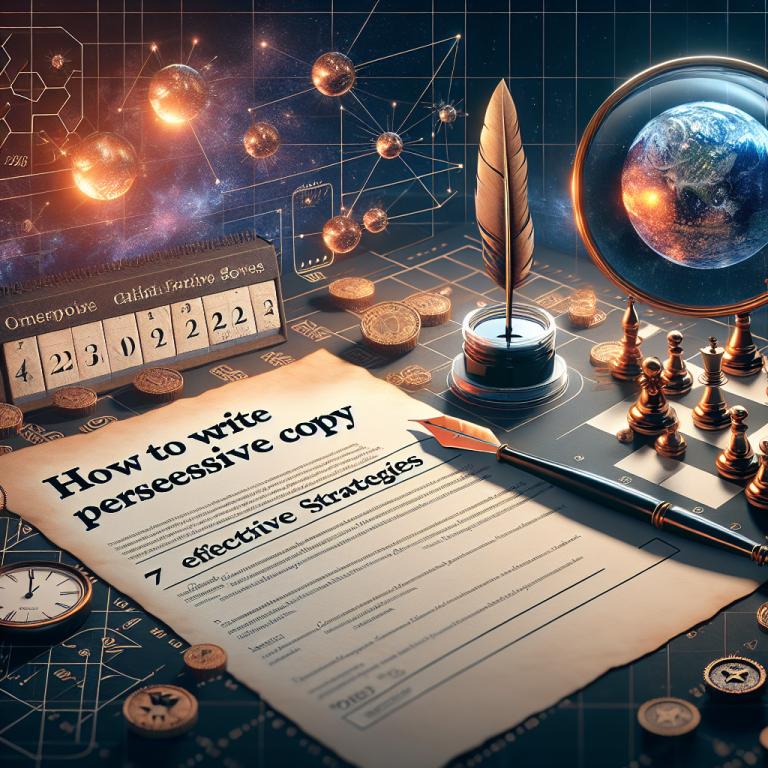How to Create Lead Magnets from Blog Posts: 7 Effective Strategies for 2025
- 1. Know Your Audience and Their Needs
- 2. Offer High-Value Content That Solves Problems
- 3. Use Engaging and Varied Formats
- 4. Leverage Effective Landing Pages
- 5. Optimize Lead Magnets for SEO
- 6. Test and Refine Your Lead Magnets
- 7. Promote Your Lead Magnets Strategically
In 2025, understanding how to create lead magnets from blog posts has become essential for digital marketers aiming to grow their email lists and nurture leads effectively. Lead magnets are valuable free resources offered in exchange for contact information, and transforming blog content into compelling lead magnets is a smart tactic. This article explores seven proven strategies to craft irresistible lead magnets from your blog posts that resonate with your audience and boost conversions.
1. Know Your Audience and Their Needs
Research Your Target Audience
Before creating any lead magnet, it’s crucial to understand your audienceâs pain points, interests, and preferences. Use analytics tools like Google Analytics or social media insights to gather data on your readers. Conduct surveys or polls to ask what kinds of resources they find most helpful.
Knowing your audience allows you to tailor your blog content into lead magnets that genuinely resonate. For instance, if your readers frequently comment about struggling with time management, a downloadable checklist or planner tailored to that challenge would be highly appealing.
By aligning your lead magnets with audience needs, you increase the likelihood of conversions. In 2025, personalized and targeted offers outperform generic ones by at least 80%, according to recent marketing studies.
Identify Common Challenges and Questions
Review comments on your blog posts or social media to identify recurring questions or concerns. These insights reveal what your audience finds confusing or difficult, guiding you to create relevant lead magnets.
Create content that addresses these challenges directly, such as a step-by-step guide or resource list. When your lead magnet answers specific questions, readers see immediate value, making them more likely to exchange their contact info.
Remember, a lead magnet built on a real need stands out and attracts quality leads, especially in today’s competitive content landscape.
2. Offer High-Value Content That Solves Problems
Create Actionable Resources
Your lead magnet should provide clear solutions or insights that readers can implement immediately. Examples include templates, cheat sheets, or exclusive checklists. For example, a blog post about content marketing can be turned into a downloadable editorial calendar template.
In 2025, the best-performing lead magnets are actionable and easy to consume. They promise quick wins and tangible results, fostering trust and encouraging sign-ups.
Always ensure your content is comprehensive but concise enough to deliver immediate value. This approach not only captures emails but also builds credibility with your audience.
Use Visuals to Enhance Value
Adding visuals like infographics, charts, or screenshots makes your lead magnet more engaging and easier to understand. For example, if your blog discusses social media growth, an infographic summarizing key strategies can be highly appealing.
Visuals also help in digesting complex information quickly, which is crucial for busy readers. In 2025, interactive PDFs and multimedia elements are increasingly popular, improving engagement rates.
Invest in good design to ensure your lead magnet looks professional and compellingâthis significantly impacts perceived value.
3. Use Engaging and Varied Formats
Choose the Right Format for Your Audience
Different formats resonate differently depending on your target audience. Popular options include eBooks, checklists, video tutorials, webinars, or cheat sheets. For tech-savvy audiences, interactive content like quizzes or calculators can be highly effective.
Diversifying formats helps reach a broader audience and caters to various learning styles. For instance, a detailed blog post on SEO might become a downloadable cheat sheet for quick reference or a short video explainer for visual learners.
Experiment with formats in 2025 to see which ones generate the highest engagement and lead conversion rates among your followers.
Enhance Engagement with Interactive Content
Interactive lead magnets like quizzes or calculators can boost engagement and provide personalized insights. For example, a blog about fitness can be transformed into a calorie calculator or personalized workout planner.
This type of content increases the perceived value and encourages sharing, expanding your reach. Moreover, interactive elements often lead to higher email sign-up rates.
Ensure your interactive content is easy to use and provides immediate value, turning passive readers into active participants.
4. Leverage Effective Landing Pages
Design for Conversion
Your landing page is the gateway for your lead magnet. Use clear, compelling headlines and focus on the benefits rather than features. For example, instead of “Download our SEO checklist,” try “Boost Your Rankings with Our Free SEO Checklist.”
Keep the form simpleâname and email are usually enough. Use social proof, such as testimonials or download counts, to build trust and authority.
In 2025, continuous A/B testing on landing pages can improve conversion rates by up to 30%, so regularly optimize your design and copy.
Optimize for User Experience
A seamless user experience increases the chances of success. Ensure your landing page loads quickly, is mobile-friendly, and has a clean layout. Add clear call-to-action buttons that stand out.
Include a visual or mockup of your lead magnet to set expectations. For instance, showing a preview of an educational PDF can entice visitors to subscribe.
Analytics data can tell you who visits your landing page and how they behaveâuse this info to refine the experience continuously.
5. Optimize Lead Magnets for SEO
Keyword Integration and Metadata
Incorporate relevant keywords naturally into your landing page content, titles, and meta descriptions. Using the phrase how to create lead magnets from blog posts strategically within your headers and copy helps boost organic visibility.
Ongoing SEO optimization in 2025 includes voice search considerations and semantic keyword integration, increasing your chances of ranking higher in search results.
Metadata should be compelling and concise, encouraging clicks from search engine results pages (SERPs). Include a call-to-action in your meta description for better CTR.
Build Backlinks and Authority
High-quality backlinks from reputable sites boost your website’s authority, which helps your lead magnet pages rank better. Reach out to industry influencers, guest blog on relevant sites, and share your lead magnets on social platforms.
Creating shareable, high-value content encourages others to link to your pages, increasing organic traffic and lead potential.
Stay updated with SEO best practices in 2025 to ensure your efforts remain effective amid evolving search engine algorithms.
6. Test and Refine Your Lead Magnets
Utilize A/B Testing for Better Results
Experiment with different headlines, formats, and calls-to-action to see what resonates best with your audience. Use data-driven insights to continually improve your lead magnets.
Track conversion rates, bounce rates, and engagement metrics. Over time, small tweaks can lead to substantial increases in lead capture efficiency.
Tools like Google Optimize or Hotjar can provide valuable behavioral data to refine your strategy in 2025.
Gather Feedback and Make Adjustments
Collect direct feedback from users via surveys or follow-up emails. Find out what they liked, what could be improved, and what additional resources they need.
Adjust your lead magnets accordinglyâadding new sections, changing formats, or updating content can keep your offerings fresh and relevant.
This ongoing process ensures your lead magnets stay effective and aligned with current audience preferences.
7. Promote Your Lead Magnets Strategically
Multi-Channel Promotion
Share your lead magnets across all your marketing channelsâsocial media, email campaigns, guest posts, and paid ads. Tailor your messaging to each platform for maximum impact.
Use in-blog call-to-action spots, sidebar widgets, and pop-ups to capture attention. In 2025, personalized email nurturing sequences can effectively convert leads into customers.
Partner with influencers or industry experts to expand your reach and increase sign-ups.
Leverage Content Upgrades and Integrations
Implement content upgrades within your blog postsârelated checklists or templates offered as lead magnetsâencouraging deeper engagement.
Integrate your lead magnets with email marketing tools for automated sequences, ensuring your new subscribers are nurtured and guided toward conversion.
Consistent promotion combined with value-driven content will help you maximize the effectiveness of your lead magnets in 2025.
Conclusion
Mastering how to create lead magnets from blog posts is a vital skill for content marketers in 2025. By understanding your audience, offering high-value content, utilizing engaging formats, optimizing landing pages, and promoting strategically, you can attract more leads and grow your business effectively.
Continually test, refine, and stay current with SEO trends to keep your lead magnets attractive and effective. Implementing these seven strategies will ensure your blog not only engages readers but also converts them into loyal customers.
Frequently Asked Questions
1. What are some effective types of lead magnets in 2025?
Popular lead magnets include eBooks, cheat sheets, checklists, webinars, and interactive quizzes. Content should be actionable, visually appealing, and tailored to your audienceâs needs.
2. How can I optimize my blog posts to better create lead magnets?
Identify key topics, address common questions, and structure your content to naturally lead into a downloadable resource. Use clear calls-to-action and relevant keywords, including how to create lead magnets from blog posts, to improve SEO.
3. Why is A/B testing important for my lead magnets?
A/B testing helps you determine which formats, headlines, and offers perform best, allowing you to optimize for higher conversion rates and more engaged subscribers.
4. How do I promote my lead magnets effectively?
Use multiple channels such as social media, email campaigns, and in-blog placements. Personalization and targeted messaging will increase engagement and sign-up rates in 2025.
5. Can I repurpose existing blog content into lead magnets?
Absolutely! Repurpose popular blog articles into downloadable checklists, templates, or videos. Look for posts with high engagement and convert them into more interactive and valuable lead magnets.









